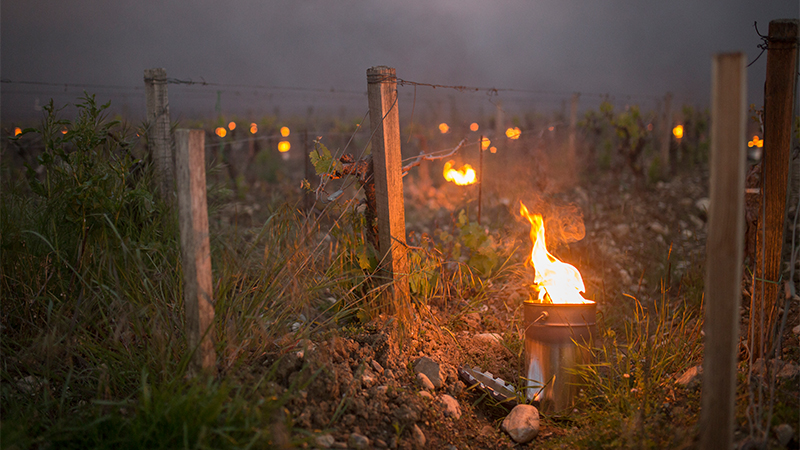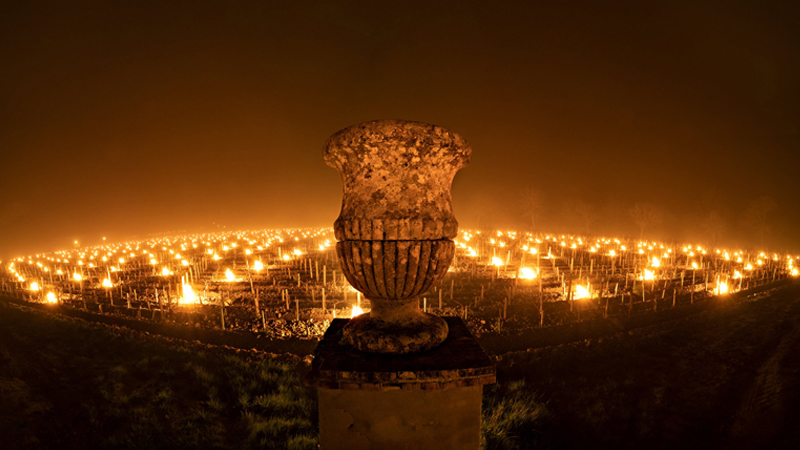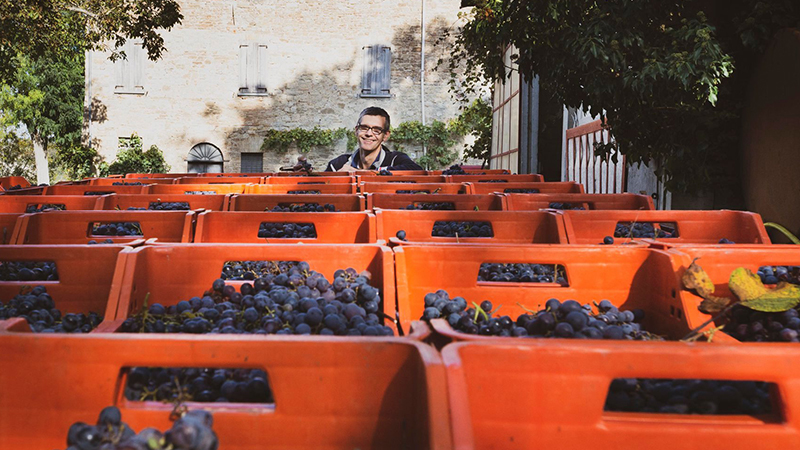In April of 2021, winemakers across Europe found themselves battling a freak late frost. At Tenuta di Trinoro, a vineyard in Tuscany, it took a 24-strong team several hours one blistering cold night to set out and light up 3,500 candles to keep the fragile young buds of the vines from freezing. Then, as a summer of brutal sun and droughts drew to a close, the vineyard had to expedite the harvest to avoid ending up with a sugary, high-alcohol product.
Data released during the COP26 climate change summit in Glasgow in November 2021 has revealed that these extreme weather events and rising temperatures caused production in the Italian wine industry to drop by 9 percent this year. The report is a stark warning that climate change is having and will increasingly have drastic effects on Italy’s winemaking sector.
A Sobering Year for Wine Production
At COP26, the International Organization of Vine and Wine (OIV) presented findings about the effects of unfavorable weather and climatic conditions on the world’s wine production in 2021. As well as the late spring frosts in Italy, there were downpours in the summer — which tend to run off the hillside rather than penetrate the ground — and hail that damaged the fruit. The unseasonable frosts, extreme heat waves, and storms that battered the country have resulted in the industry losing an estimated €2 billion ($2.3 billion) so far this year.
Don’t miss a drop!
Get the latest in beer, wine, and cocktail culture sent straight to your inbox.
Although the individual adversities can be managed in some ways — such as covering vines with netting to protect from hail — the unpredictability of such dramatic weather events remains problematic. “When you see the problem, it’s too late,” says Benjamin Franchetti, whose family runs the vineyard Tenuta di Trinoro. “The issue for us now is being able to foresee it.” Franchetti and his family are now considering installing some kind of infrastructure, perhaps heated pipes, to cope with unforeseen frosts.
The unusual frost in late spring last year was particularly devastating because of unseasonably warm weather earlier in the year that caused the vines to form precocious, delicate buds easily susceptible to frost damage. Winemaker and consultant enologist Francesco Bordini calls this the “most dangerous effect” of global warming. “In the north and center of Italy, it is normal to have some frost at the end of March and early April,” he says, “but it is not normal for the bud breaking of the vines to start in the middle of March.” As Franchetti explains, if a system like lighting fires is not used to keep the vines warm, it can result in a drastically reduced yield that year. Used across Europe, this is a common way to protect the plants from frost, with 300 torches spread over one hectare able to raise the temperature by 3 degrees Celsius.

Vines Feel the Heat
Global warming, a central issue debated at COP26, is threatening Italy’s wine production throughout the rest of the year, too. Rising temperatures in the summer, combined with long periods of drought, have multiple adverse effects. Through photosynthesis, heat activates and accelerates the production of sugar in grapes, resulting in elevated sugar content. During the fermentation process, the sugar turns into alcohol — thus producing wines with a higher alcohol content. As Coldiretti, the Italian agricultural lobby, said in a statement, “Overheating is changing made-in-Italy wine, which in the last 30 years has seen the alcohol content increase by one percent.”
In addition, when summer nights see increased temperatures, Bordini explains that the vines do not absorb soil nutrients during the night and thus produce less acidic and flavorsome fruit. “If you want to understand if it will be a good or bad vintage, check if during the summer there were warm nights,” he says. Red wines can also see a loss of color intensity during particularly hot summers, as the pigments are impacted by the heat.
Rising temperatures and low rainfall in the summer can also result in vines that require additional irrigation. Tenuta di Trinoro had to increase its water supply to the vines last year to keep them hydrated. “That’s definitely an issue,” Franchetti says. “We had to adapt and find new ways of doing things.”

Hastening the Harvest
The effects of heat and accelerated photosynthesis mean the time grapes need to ripen is reduced, an effect that is being seen across Europe. As such, last year, producers in Italy experienced expedited harvests — in some cases nearly a month earlier compared to 10 years ago. But Bordini explains that even though grapes might be ripe, they are not necessarily ready for vinification. “Wine from a hot year has very strong tannins because the fruit has had less time to ripen,” he says, “and as such, less time to increase the quality of the tannin.” Tannins do not develop faster in a hot year, unlike sugars. But holding off harvest until the tannins have improved is not an option. “The acidity goes down sharply and the sugar levels rise quickly in this period, so you can’t wait or the wine would become like jam,” Bordini says. “Unfortunately, the ripening of the tannin is the slowest process.”
Bordini reports that Italy’s winemakers are trying to combat this problem by delaying the ripening of the grapes. The techniques involve slowing down photosynthesis — for example, shading the vines with nets or strategically removing the leaves that actively collect sunlight. Another popular technique is to spray the leaves with white clay that reduces photosynthesis capacity and lowers the temperature of the leaves and the grapes. “The system was studied in Israel for fruit and vegetables,” Bordini says. “And in the last [few] years, in very hot areas, wine producers in Italy have started to use it, too.”

A Return to Native Varieties
Grape varieties that are not indigenous to Italy are suffering the most from global warming, according to Bordini. This is because they tend to be early ripening varieties — such as Merlot, Chardonnay, or Pinot Noir — that are ready to be harvested in late August and early September. “If the ripening happens even earlier in the hottest months of the year, the quality is much worse,” he says.
Native varieties like Sangiovese or Nebbiolo are late-ripening, however, and can therefore cope better with rising temperatures. “Historically, these have been favored because the grape stays longer on the vine — giving it longer to increase its flavors,“ Bordini says. “And so now, it’s still easier to maintain the acidity, the freshness, and the flavors of these grapes.” He notes that many wine producers in the region he lives in, Emilia-Romagna, began favoring Chardonnay over native varieties like Albana around 30 years ago. Now, however, they are returning to the indigenous varieties. “I think soon, it will not be possible to cultivate Chardonnay anywhere in Italy,” he says.
The struggles of Italy’s winemakers are echoed around the world in sectors from coffee production to rice farming. Speaking at COP26, United Nations Secretary General António Guterres said: “From the ocean depths to mountaintops, from melting glaciers to relentless extreme weather events, ecosystems and communities around the globe are being devastated. COP26 must be a turning point for people and [the] planet.” But even with the pledges made during the summit to keep global warming below 2 degrees Celsius (3.6 degrees Fahrenheit), Italy’s world famous wines face a difficult future.
This story is a part of VP Pro, our free content platform and newsletter for the drinks industry, covering wine, beer, and liquor — and beyond. Sign up for VP Pro now!


